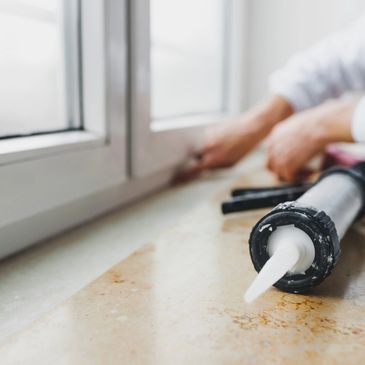As for maintaining your home, sealant application may not be the first service that comes to mind, but its value can't be dismissed. look these up caulking offers a key line of defense against flooding, poor insulation, and even vermin invasions. Many property owners neglect the potential consequences of worn or aged caulking, but ignoring it can lead to expensive repairs down the line. In this article, we will explore the costs associated with caulking services, what constitutes a fair price, and what you can anticipate during the process.
Understanding the nuances of caulking can empower you to make educated decisions about your home maintenance. From identifying the signs that it’s time to renew your old caulking to learning the types of caulking suited for various surfaces, we will examine how effective caulking not only enhances your home’s look but also significantly improves its energy performance. Whether you’re considering a home project or choosing professional services, this article will guide you through the essentials of caulking and its long-term benefits for your property.
The Importance of Sealing
Sealing plays a vital role in protecting the structure of your home. It acts as a seal that fills gaps and joints around windows, doors, and other areas. This seal is important in avoiding air leaks, which can lead to rising energy costs and a suboptimal living environment. Without adequate sealing, your home may become more vulnerable to temperature fluctuations and drafts, influencing overall energy efficiency and comfort.
In furthermore to its energy-saving advantages, caulking is vital for shielding your home from water damage. Water intrusion can cause serious damage over time, causing mold, mildew, and construction problems. By effectively sealing openings, sealing helps keep water out, defending your interior walls, flooring, and foundation from the harmful impact of water. Maintaining high-quality caulking in these areas is therefore necessary for long-term safeguarding and peace of mind.
An often-overlooked factor of sealing is its impact to the visual appeal of your home. Well-maintained sealing enhances the appearance of windows and doors, providing a polished and complete appearance. On the other hand, broken or peeling sealing can lower your home's exterior, making it look unkempt. Routine care of your caulking not only preserves the structural and functional aspects of your property but also guarantees that it remains aesthetically pleasing.
Signs to Recaulk

With time, caulking can deteriorate due to contact with the elements and changes in temperature. One of the first signs that it’s time to re-caulking is clear cracking or flaking. If you spot gaps forming between the caulk and the area it’s meant to cover, this is a clear indicator that the caulk is no longer doing its job. Inspect areas around windows and doors, as well as joints in restrooms and culinary spaces, for such signs of wear and tear.
Another sign, to look out for is moisture issues or discoloration on ceilings and walls and ceilings, which can occur when the caulking has failed to provide a good seal. If you detect any signs of dampness or fungus in these areas, it may mean that moisture is entering due to failing caulking. This not only affects the look of your home but also leads to high repair costs if left untreated.
Lastly, consider the thermal efficiency of your home. If you find yourself constantly modifying your temperature settings or detect a draft coming from window frames and entrances, it might suggest that your sealant is no longer working. Recaulking can help re-establish the protection, improving thermal performance and helping decrease your energy expenses. Keeping an eye on these signs can help protect the structure and coziness of your home.
DIY vs. Expert Caulking
As you contemplate if you should approach caulking as a do-it-yourself project or hire a professional service, it is crucial to evaluate your skills and the difficulty of the job. Doing caulking yourself can be cost-effective, but it also requires a careful touch, an awareness of the materials, and the ability to follow correct methods. Many homeowners have had success with do-it-yourself tasks, particularly in uncomplicated areas like sink areas or trim. However, without proper knowledge, errors can lead to poor sealing and further issues down the line.
Conversely, professional caulking solutions bring expertise and experience to the job. Trained professionals can ensure that the appropriate kind of caulk is used for each specific application, be it for interior or exterior projects. They also have access to high-quality materials and the proper tools, which can greatly improve the final product's overall outcome. Furthermore, professionals can identify underlying issues, such as fungus or damage that may go unnoticed by an unqualified eye, providing a thorough solution than just putting on caulk.
In the end, the choice between DIY and hiring a specialist will hinge on the scope of your project and your confidence with home fixes. For small and simple jobs, DIY might be enough, while larger or more complex jobs are often best left to those with the appropriate skills and expertise. Considering the long-term advantages and potential financial savings against the chance of inadequate installation can assist you make an informed choice.
